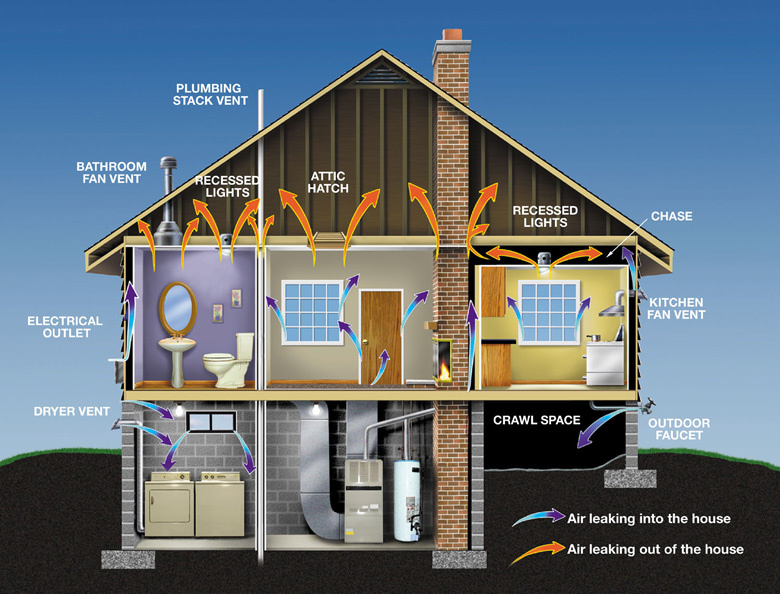
Air leakage, or infiltration, occurs when outside air enters a house uncontrollably through cracks and openings. Properly air sealing such cracks and openings in your home can significantly reduce heating and cooling costs, improve building durability, and create a healthier indoor environment.

Many air leaks and drafts are easy to find because they are easy to feel — like those around windows and doors. But holes hidden in attics, basements, and crawlspaces are usually bigger problems. Sealing these leaks with caulk, spray foam, or weather stripping will have a great impact on improving your comfort and reducing utility bills.
Homeowners are often concerned about sealing their house too tightly; however, this is very unlikely in most older homes. A certain amount of fresh air is needed for good indoor air quality and there are specifications that set the minimum amount of fresh air needed for a house. If you are concerned about how tight your home is, hire a contractor, such as a Home Energy Rater, who can use diagnostic tools to measure your home’s actual leakage. If your home is too tight, a fresh air ventilation system may be recommended.
After any home sealing project, have a heating and cooling technician check to make sure that your combustion appliances (gas- or oil-fired furnace, water heater, and dryer) are venting properly. For additional information on Indoor Air Quality (IAQ) issues related to homes, such as combustion safety, visit EPA’s Indoor Air Quality Web site.

